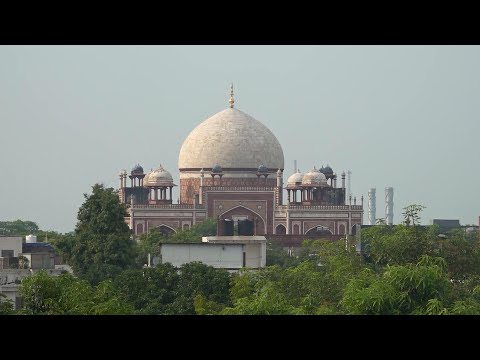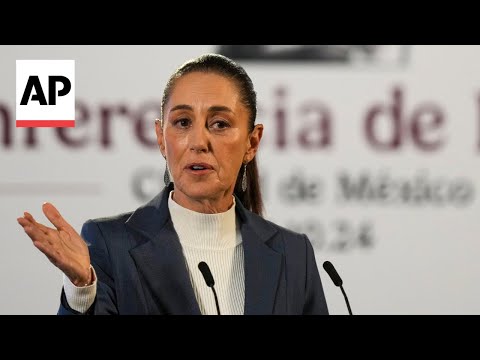(28 Aug 2024)
INDIA TOMB MUSEUM
SOURCE: ASSOCIATED PRESS
RESTRICTION SUMMARY:
LENGTH: 5:04
ASSOCIATED PRESS
New Delhi, India – 20 August 2024
1. Various of exterior of Humayun’s Garden Tomb
2. Sign board, reads (English) "Humayun World Heritage Site Museum"
3. A miniature model of Humayun’s Tomb kept inside the museum
4. Panoramic immersive reality screen depicting medieval monuments located near the tomb
5. Wall showing a timeline of various Mughal emperors from CE 1526 – 1857
6. Coins used during the rules of early Mughal emperors Babur, Humayun and Akbar
7. Seven figures of Humayun wearing the colour of the planetary lord of each day of the week
8. Ratish Nanda, CEO for the Agha Khan Trust for Culture, walking in the museum
9. SOUNDBITE (English) Ratish Nanda, CEO for the Agha Khan Trust for Culture:
“I think the museum in many ways is a living museum. I think, what it does here is it allows people to experience and touch some of these objects. And also for the young, for the youth, it brings alive through videos, through animations, aspects that which otherwise would be impossible to do. A picture speaks a thousand words, and videos and animations speak probably 10,000. So in a couple of minutes, what an immersive screen can tell you about how this area evolved for seven centuries is otherwise a daunting task.”
10. Reproduction of ceiling of the Atgah Khan Tomb
11. Wide of the museum interior
12. Various of visitors in museum
13. Pull focus from sandstone lattice screens (jaalis) to celestial sphere
14. Screen reading (English) "Patron of Art"
15. Tilt down of astrolabe
16. Pan of aftabas (vessels for drinking water)
17. Mashak (bag made from goat skin)
18. SOUNDBITE (English) Ratish Nanda, CEO for the Agha Khan Trust for Culture:
“Some of my favourite artefacts are really architectural elements, that allow visitors to understand both the grandeur and the scientific achievement and the scale of the buildings that they belong to. But also, smaller objects, like coins, which themselves, Mughal coins should be understood or recognised or valued for their artistic value. We have stone inscriptions, including from somebody who was the keeper of the Humayun’s tomb in the 17th century.”
19. Screen showing images of Humayun’s library
20. Inscription from Sarnath Stupa commemorating Humayun stopping there during his travels
21. Various of information walls in the museum
22. Vase with floral engravings
23. Miniature model of Char-Taq, Humayun’s boat-palace
24. Tilt up of star pattern tiling
25. Miniature model of Sabz Burj, mausoleum
26. Visitors looking at a wall in the museum
27. SOUNDBITE (Hindi) Muhammad Noorullah, visitor:
“[The museum] helps the new generations to relive the memories of the past. As a result, people who read history and possess knowledge of history can visualise the past shining in their eyes.”
28. Tilt down of replica of marble lattice screens and sandstone columns from Dargah of Hazrat Nizamuddin Auliya
29. Mid of daggers
30. Marble parapets from monuments in the Dargah ensemble
31. Wall with information about Dara Shukoh
32. Musical instruments
33. Wide of Mughal tiles
34. SOUNDBITE (English) Ratish Nanda, CEO for the Agha Khan Trust for Culture:
“Every penny that goes into conservation effort is a sustainable investment. The conservation effort at the Humayun’s Tomb has, year after year after year, generated tourist dollars, many times over than the conservation cost. And this is endless, with a little bit of maintenance. So even the conservation cost, is almost 70, 75% craftsmen’s wages.”
Find out more about AP Archive: http://www.aparchive.com/HowWeWork
Twitter: https://twitter.com/AP_Archive
Facebook: https://www.facebook.com/APArchives
Instagram: https://www.instagram.com/APNews/
You can license this story through AP Archive: http://www.aparchive.com/metadata/youtube/09eab11e3c9b41ccac83f885ee0b6f19
Author: AP Archive
Go to Source
News post in September 2, 2024, 3:04 am.
Visit Our Sponsor’s:
News Post In – News





